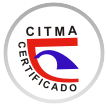Measuring the level of state intervention (support) in agricultural production.
Resumen
ABSTRACT
As in other areas of the economy the state uses various regulatory instruments to support agriculture, however, unlike other areas, more attention is paid to agriculture, taking into account the risk and its importance in terms of food security in the country. Regulatory methods to stimulate production in agriculture include research and development (R&D), farm staff training, infrastructure support, tax incentives, low-interest loans, subsidies, etc. However, the level of state intervention in agriculture is not such a developed topic, so measuring this aspect is the main objective of this work. Thus, the article presents a methodology to measure the level of direct and indirect state intervention (or support) in agricultural production, mainly analyzing OECD countries. Based on the methodology, the State Intervention in Agriculture Index (ISIA) is calculated in 29 countries, and based on the level of state intervention, states are ranked from least (liberal) to most (structural). According to the result obtained, the dependence between the dynamics of agricultural development in the countries was evaluated, arriving that in terms of the risk of agriculture and the provision of food security in the country, a "soft" but effective state intervention is necessary. promoting incentives and subsidies for the development of the agricultural sector.
Keywords: state intervention, agricultural sector, tax regulation
RESUMEN
Como en otras áreas de la economía el estado utiliza varios instrumentos regulatorios para apoyar la agricultura, sin embargo, a diferencia de otras áreas, se presta más atención a la agricultura, teniendo en cuenta la riesgo y su importancia en términos de seguridad alimentaria en el país. Entre los métodos regulatorios para estimular la producción en la agricultura se incluyen la investigación y desarrollo (I+D), la capacitación del personal agrícola, el apoyo a la infraestructura, incentivos fiscales, préstamos a bajo interés, subsidios, etc. Sin embargo, el nivel de intervención del estado en la agricultura no es un tema tan desarrollado por lo que la medición de este aspecto es el objetivo principal de este trabajo. Así, en el artículo se presenta una metodología para medir el nivel de intervención (o apoyo) estatal directo e indirecto en la producción agrícola analizando principalmente los países de la OCDE. Con base en la metodología, el Índice de Intervención Estatal en la Agricultura (ISIA) se calcula en 29 países, y según el nivel de intervención estatal, los estados se clasifican de menos (liberal) a más (estructural). De acuerdo al resultado obtenido, se evaluó la dependencia entre la dinámica del desarrollo de la agricultura en los países arribándose que en términos del riesgo de la agricultura y la provisión de seguridad alimentaria en el país, es necesaria una intervención estatal "suave" pero efectiva propiciando incentivos y subsidios para el desarrollo del sector agropecuario.
Palabras clave:
Intervención estatal, sector agropecuario, regulación tributaria
Descargas
Publicado
Cómo citar
Número
Sección
Licencia
La editorial "Universo Sur", de la Universidad de Cienfuegos, publica el contenido de la Revista "Universidad y Sociedad" bajo una Licencia Creative Commons Atribución-NoComercial-SinDerivar 4.0 Internacional.
© Podrá reproducirse, de forma parcial o total, el contenido de esta publicación, siempre que se haga de forma literal y se mencione la fuente.










